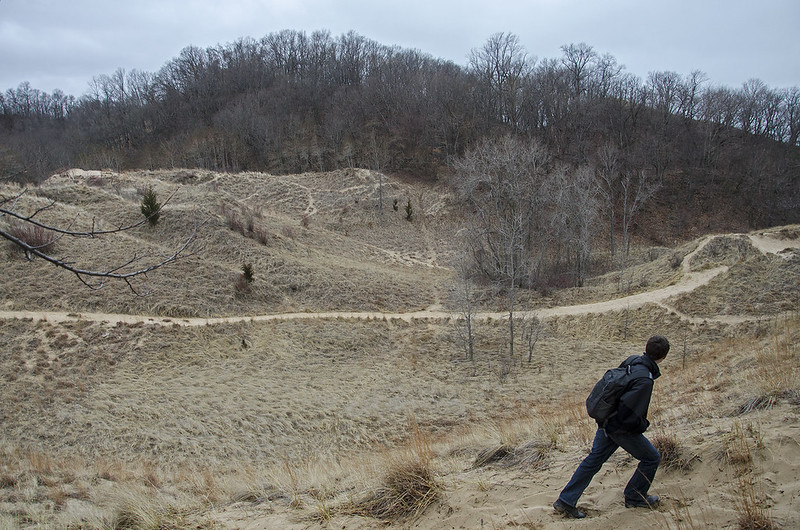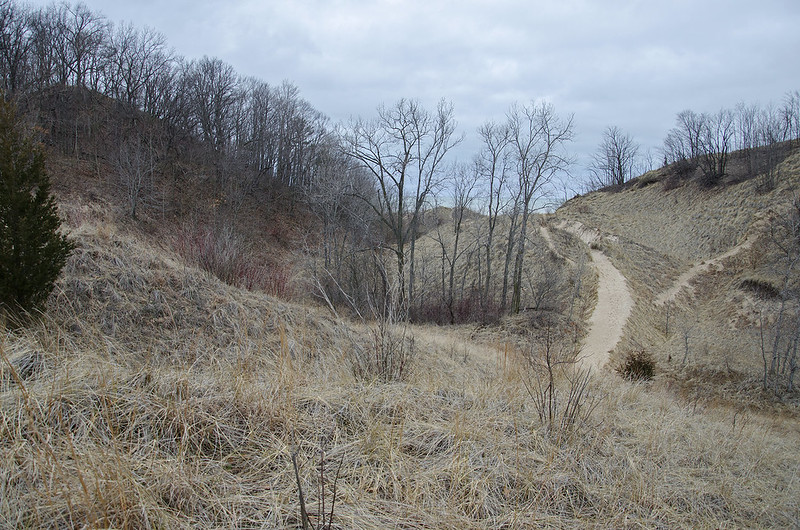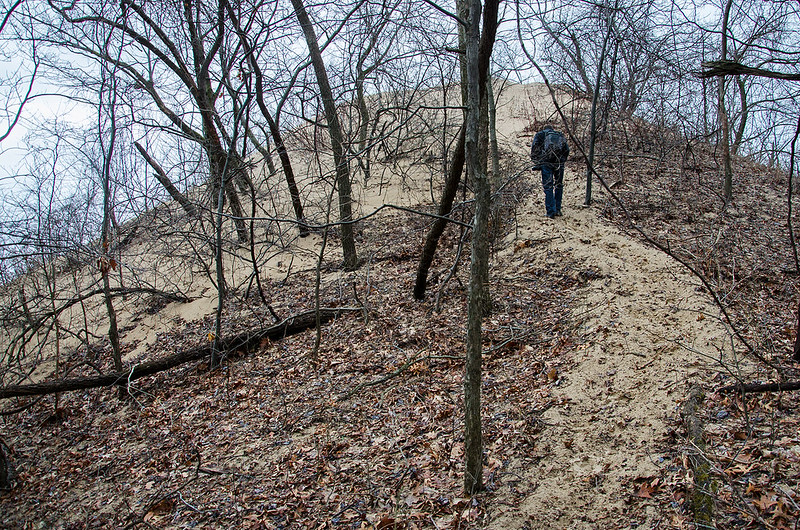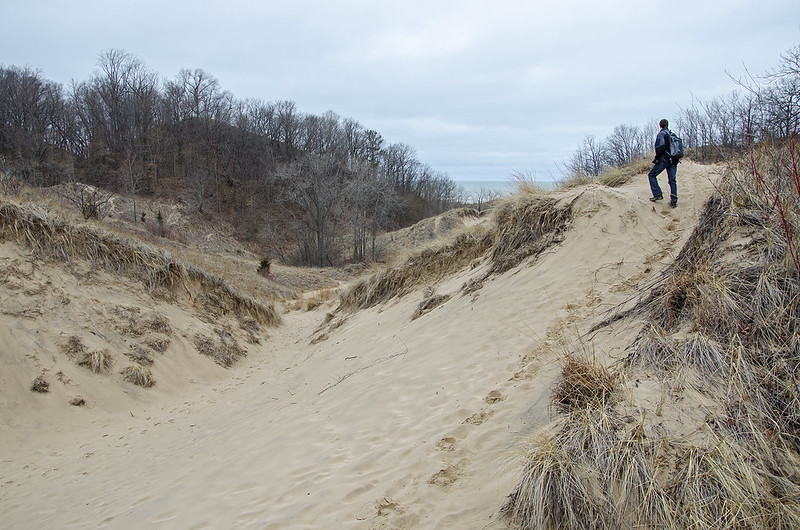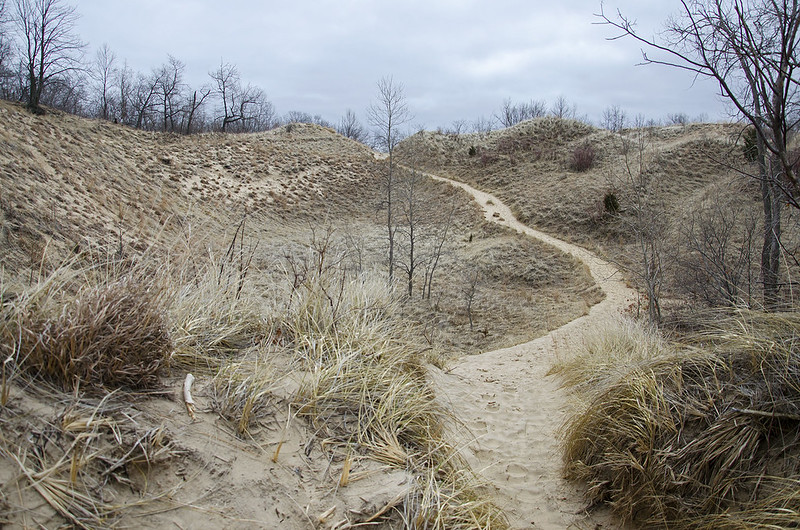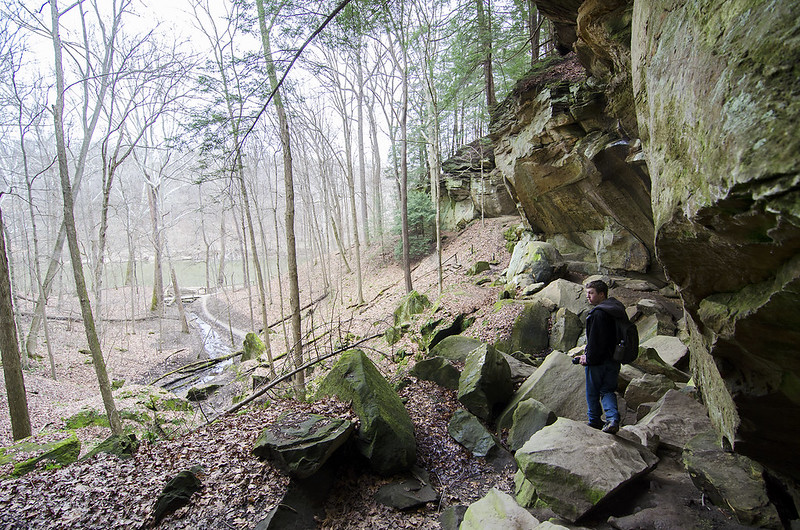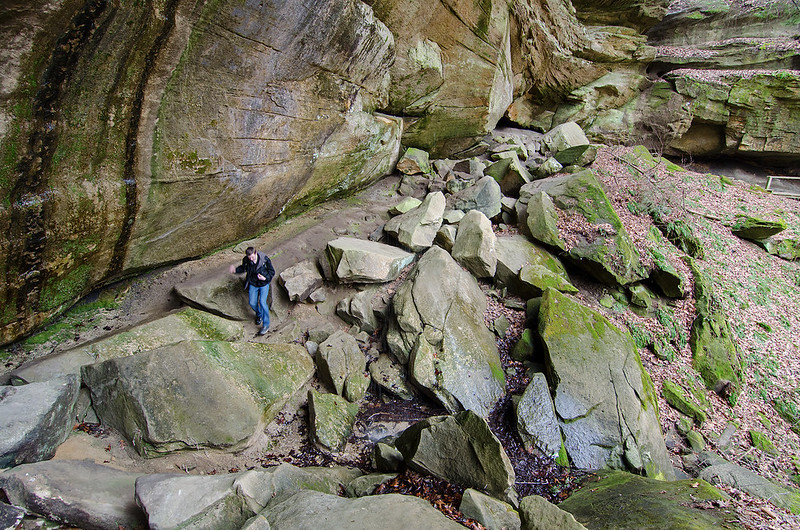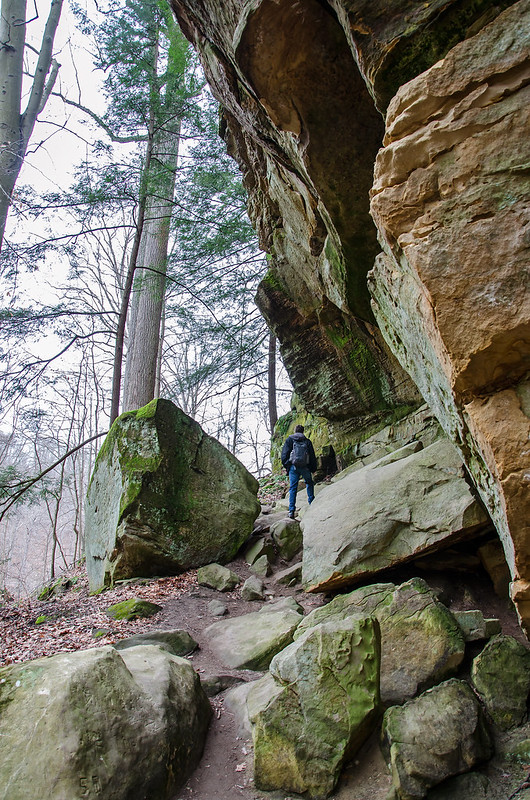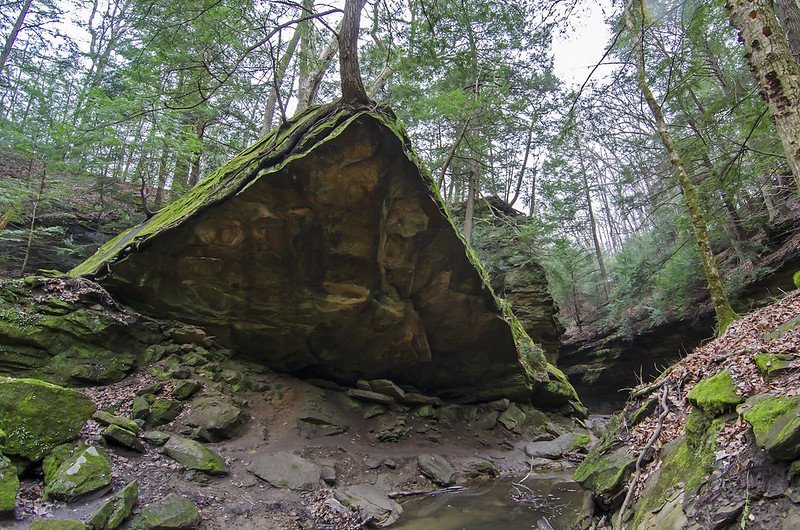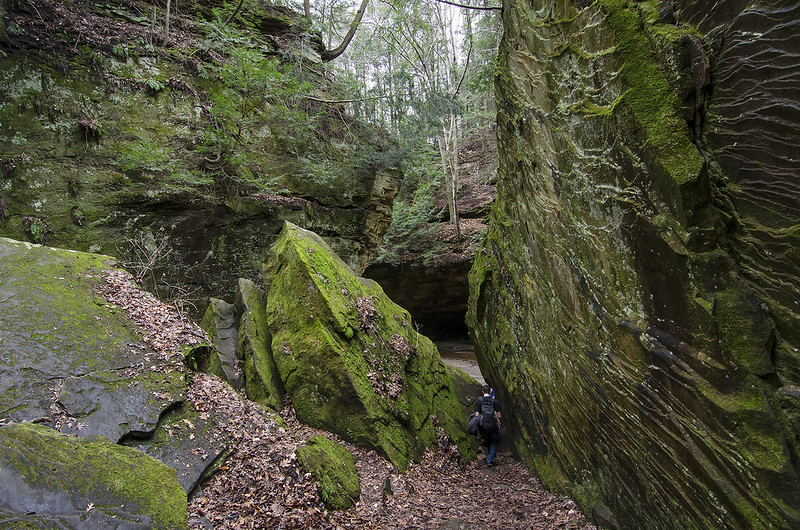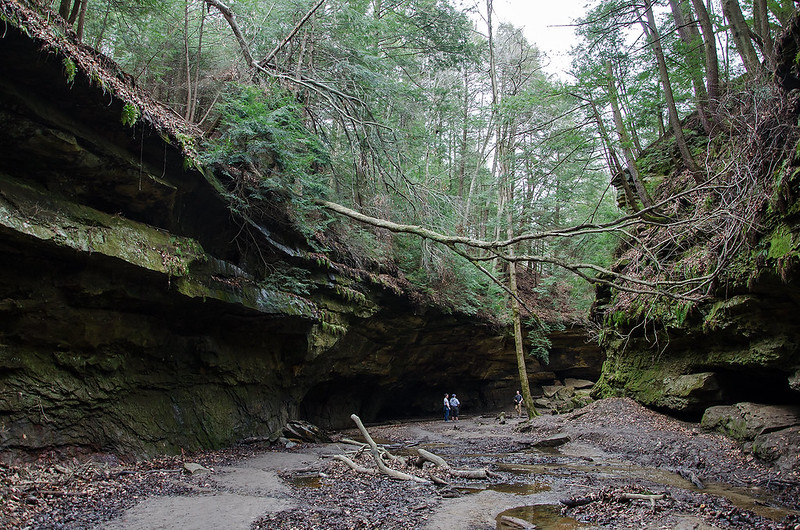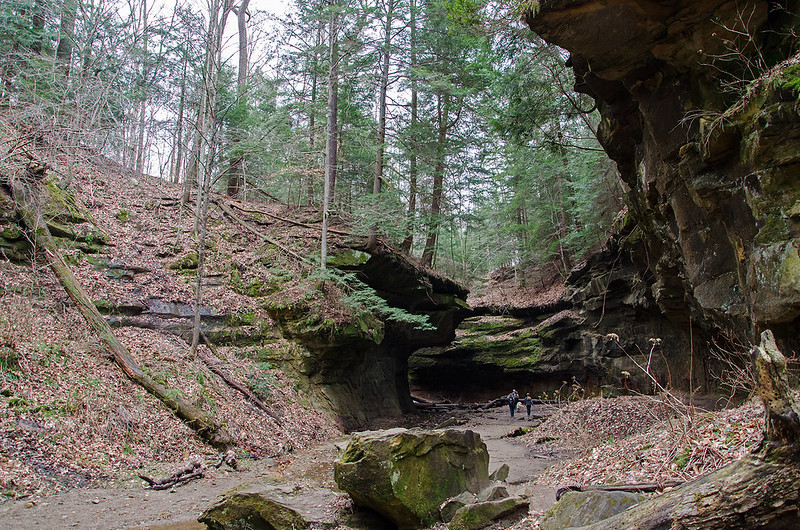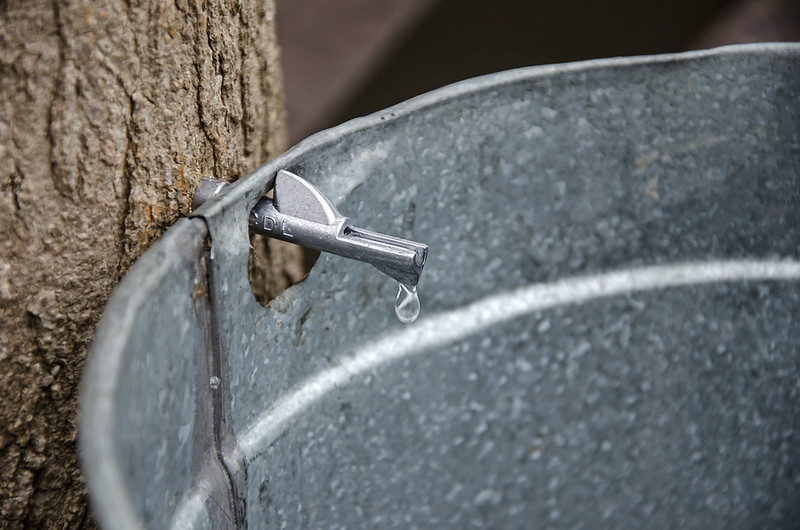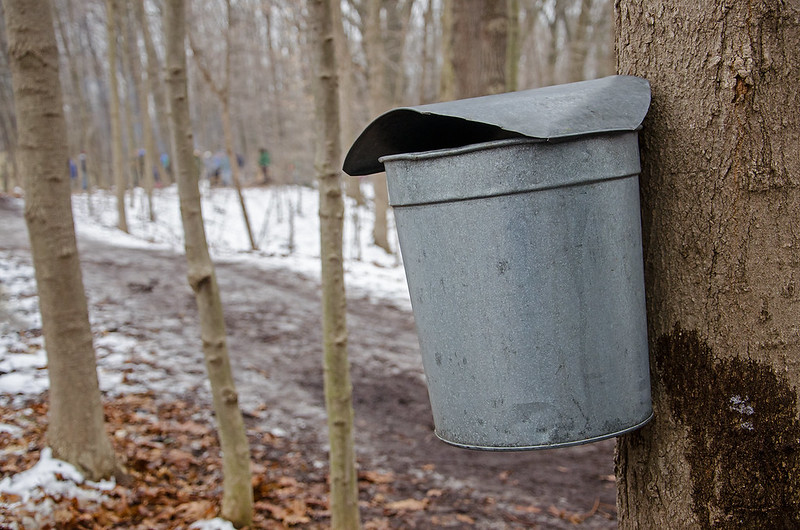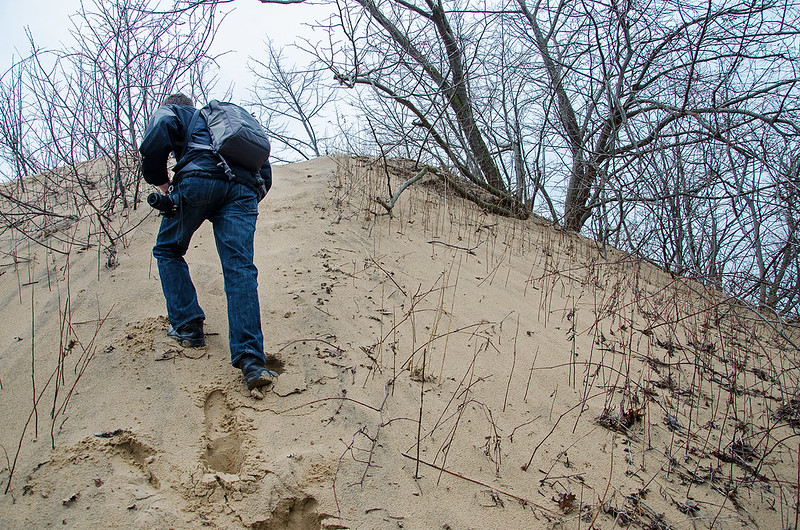
The last few meters of our hike were the most challenging. The loose sand toward the top of the dune was a bit difficult to climb - with each step, we sank into the sand, and slid backwards a little. The angle of the dune also became steeper toward the top.
Once we reached the top, we turned south to view the landscape toward the center of Michigan. Up this high, we were above the treetops and could see for miles around us.
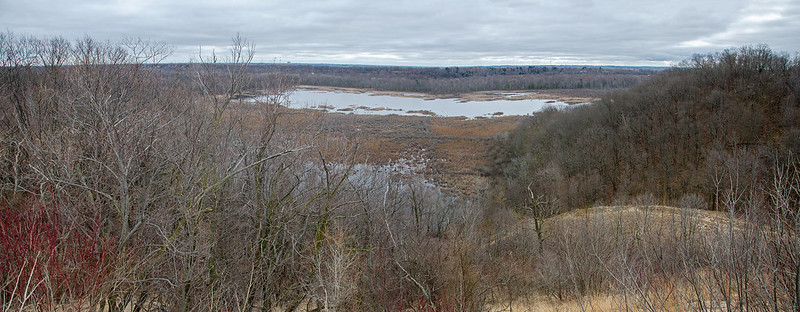
We had a perfect view of South Lake, one of the small lakes within the park. From this distance we could see several swans on the water, and plenty of other water foul. I suspect in a few weeks, many migratory birds may call this area home.
Turning around toward the stiff wind off of Lake Michigan, we finally saw why this wooded dune had a bare sand summit- we were at the living edge of a blowout. A blowout is a portion of the dune that is devoid of vegetation, and because of this, erodes by the wind. The sand is blown to the top of the dune, where it falls on the leeward side, burying everything in its path. Here, the sand covered the fallen leaves and small trees near the summit.
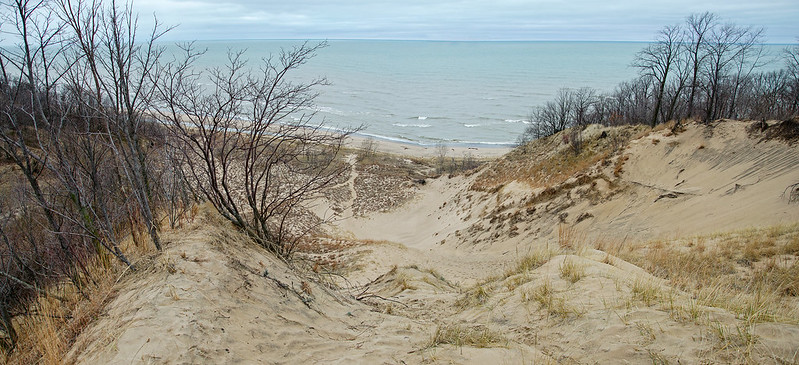
A cold Lake Michigan came into view, along with the maze of smaller fore dunes. We hiked down to the beach and discovered a large amount of objects washed up by the series of storms in the area. Trees, wood from docks, and parts of boats littered the beach. Nothing unusual following a wind winter on the Great Lakes,
Our hike continued inland.
